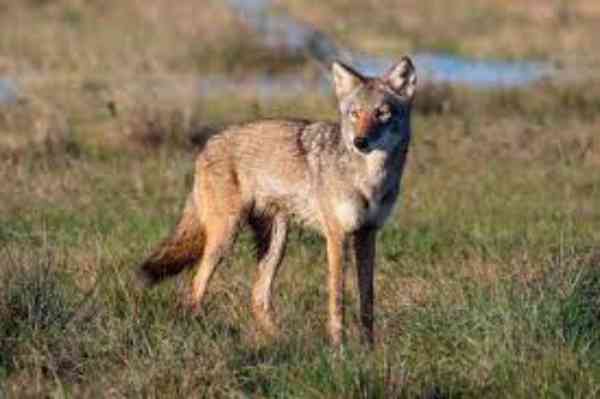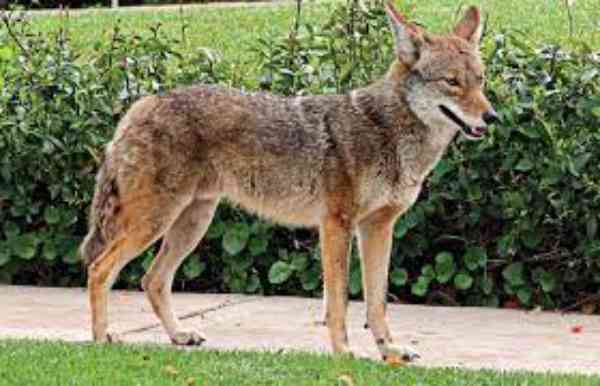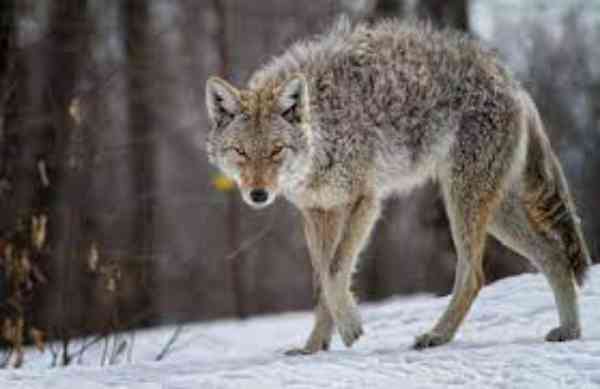Coyotes in Washington State have been around for a long time, but it was not until recently that their presence was documented and reported. Living in both rural and urban areas, these animals are the largest member of the dog family, yet they lead a different lifestyle than most domesticated canines. Found throughout Eastern Washington and Western Oregon, coyotes roam around looking for food with their distinct vocalizations echoing through the night. Coyotes play an important role in controlling rodent populations in localized areas as well as help to maintain balance with an array of other predators

Table of Contents
Habitat
In Washington state, coyotes are a prominent predator throughout its forests and grasslands. The main creature that preys on the coyote is the grey wolf, which shares much of the same territory with them in eastern Washington. Other animals known to prey on coyotes include American black bears, mountain lions, and grey foxes. While these predators may pose a threat to coyotes, their adaptability and resourcefulness have allowed them to maintain a significant presence for many years despite external pressures from their enemies.
Diet
Coyotes generally consume a very varied diet. They feed on small mammals such as mice and voles, but also enjoy eating fruits like berries and apples, insects, reptiles and ground-dwelling birds. Plant matter such as grass or even corn may also be taken advantage of when the opportunity arises. Deer carrion can be an important food source for these opportunistic animals. The diet of coyotes largely depends on the season and availability of different food sources. As they are nocturnal animals, coyotes are known to scavenge pastures at night as well as hunt during both day and night depending on their needs in order to survive.

Colour
The coyote’s fur is typically grizzled grey-brown in colour, with lighter fur on the underside of the body. However, within Washington state, there are also black, white, and even blonde-coloured coyotes, presenting an exciting array of colours among these canids. Each coat variation helps them blend into their environment more effectively while they hunt for their prey. This versatility allows them to thrive in Washington.
Size, Lifespan and Weight
The average size of these creatures is between four and six feet long, depending on their age and gender. These animals live anywhere from ten to thirteen years but some can reach nearly fourteen years in age. The average weight of an adult coyote is only 30 pounds but this varies again depending on the sex of the animal and which specific breed it belongs to.
Predators
Coyotes are a common presence in Washington State, but few people are aware of the predators that feed on them. Foxes, bobcats, and cougars are all known to hunt down coyotes when food is scarce or when they feel threatened. Some bald eagles have also been observed preying on young coyote cubs near watery areas in the state. In an effort to lessen the impact of predation on coyote populations, Washington State has implemented various laws and regulations to help protect these animals from harm.

Reproduction
Coyotes are capable of reproducing throughout the year, with a peak in births during Springtime. Female coyotes typically give birth to their litters of offspring within a den. Litters usually consist of 5-6 pups and both parents are involved in raising and protecting them. As they grow, the family unit begins to search for food together but will separate from each other at around eight months old when the pups become independent.
Coyotes hunting rules in Washington state
The rules regarding the hunting of coyotes in Washington state are quite specific and clearly lay out the practices allowed during hunting season. During the firearm hunting season, coyotes located on private land may be taken without a special permit as long as it coincides with big game seasons. Shotguns, muzzleloaders, and other appropriate firearms are allowed to hunt coyotes. Hunting is only permissible during particular daylight hours, and dogs or baiting are not allowed while participating in this type of activity.
Can you bait Coyotes in Washington state?
Coyotes can be baited in Washington, as long as it is done using predetermined methods and within the confines of established regulation and law.

Do Coyotes live in Washington state?
Yes, coyotes can be found throughout most of Washington state. The majority of them are found in the eastern half of the state and live mostly in farmlands, woodlands, wetland margins, and semi-desert habitats. Interestingly, they have adapted to living around humans and human development and can be seen in parks and residential areas.
Can you own a Coyote in Washington state?
No, Owing Cayote as a pet is illegal in Washington state.
How many Coyotes are in Washington state?
There is no exact answer to the question of how many coyotes are living in Washington state. It has been estimated that there are between 25,000 and 71,000 individual coyotes living across all habitats in the state, ranging from mountain forests to the dry lowlands in eastern Washington.
References:
https://bellingham.municipal.codes/BMC/7.12.100#:~:text=F.,as%20licensed%20under%20state%20law.
https://wdfw.wa.gov/species-habitats/species/canis-latrans
https://www.coyotehunting101.com/coyote-hunting-washington/

Jeevan Kodiyan
An animal enthusiast with an interest in zoology, studying the behavior and activities of animals in the wild habitat. I work on research projects related to species conservation and endangered species protection. I also leverage zoology to become an educator, educating others about the importance of protecting our natural environment and the beauty of animals in their natural habitats.









